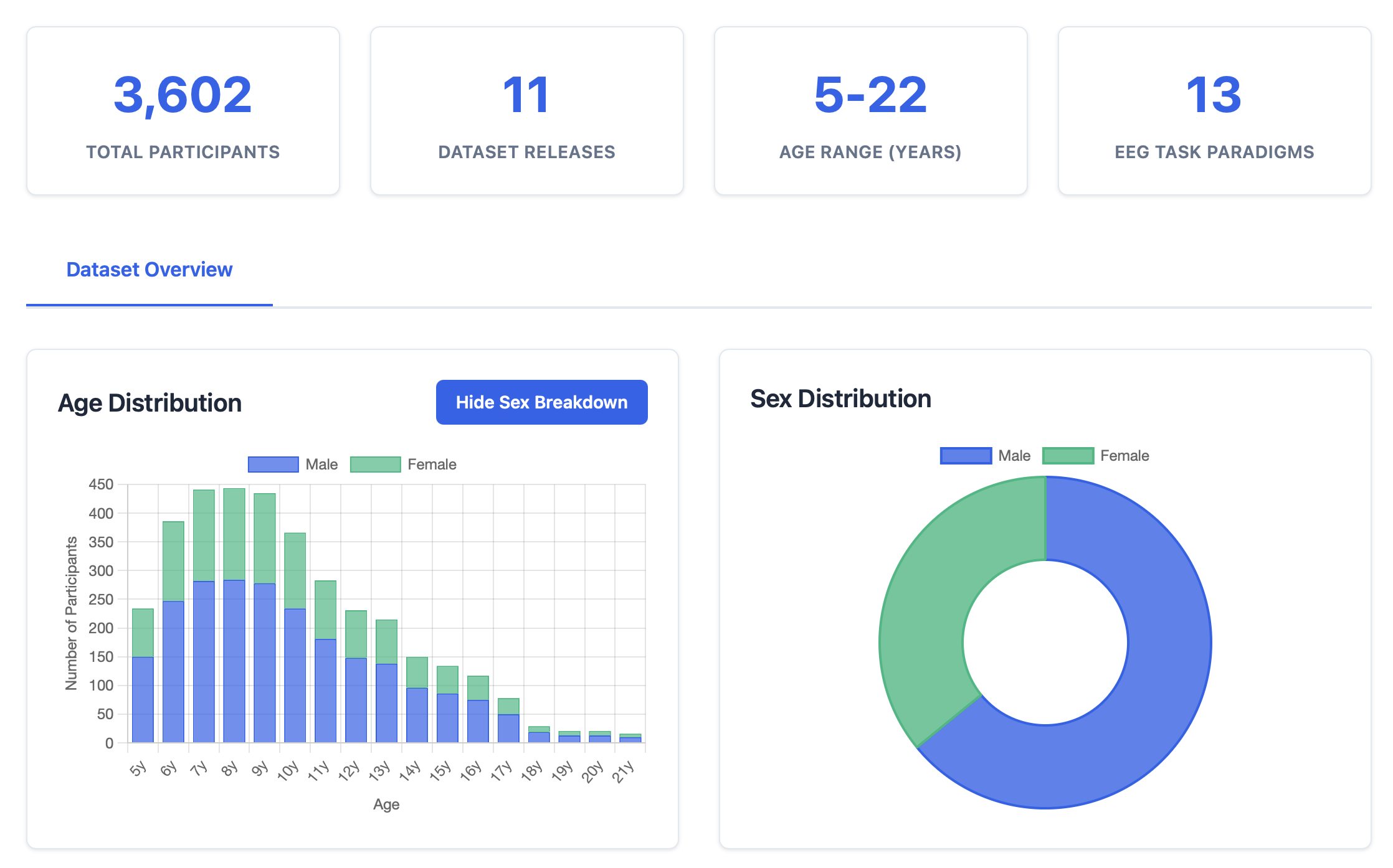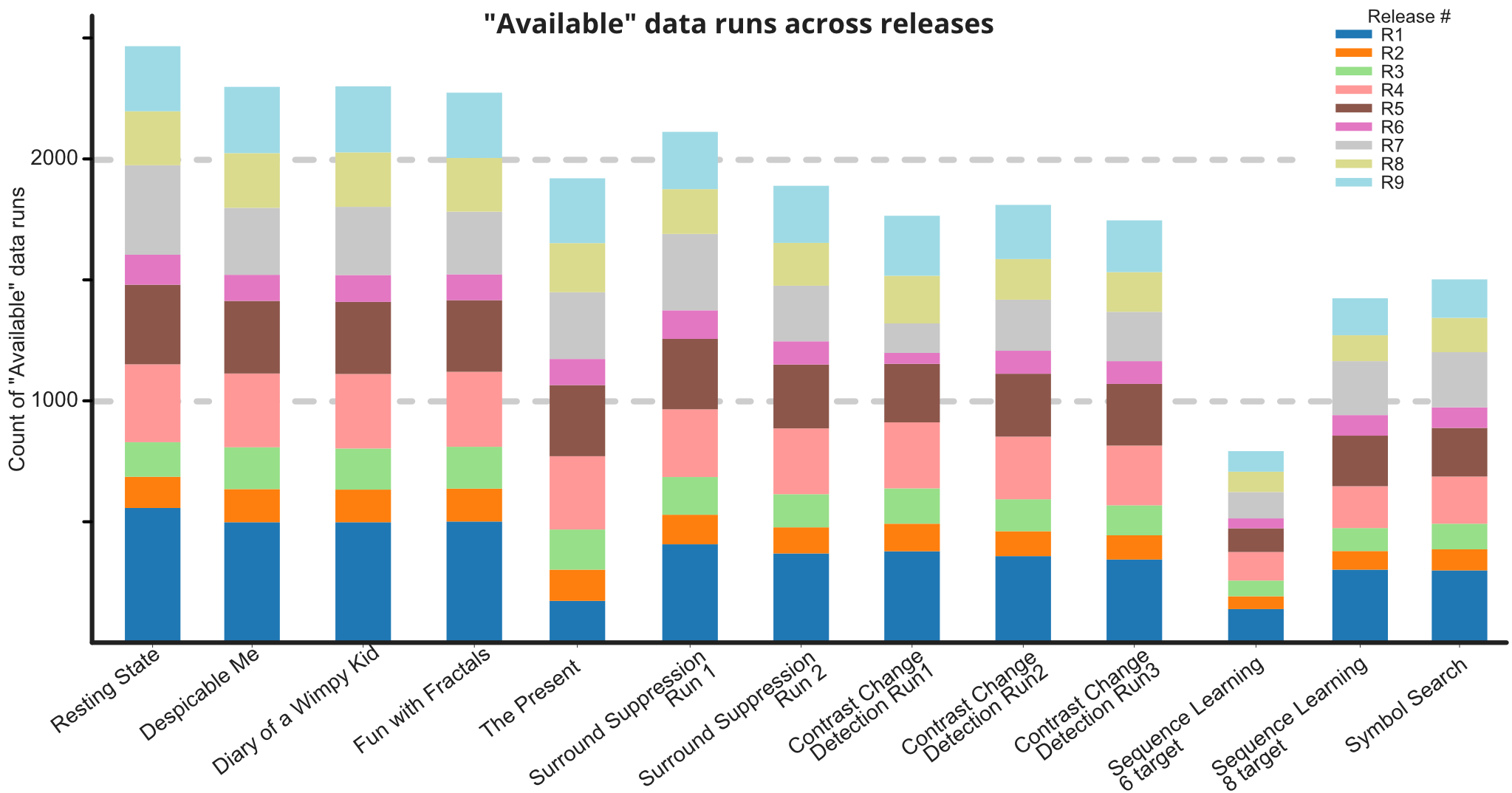Creating Interactive Dashboards in Hugo: A Complete Guide
Learn how to transform your Hugo static site into an interactive dashboard powerhouse using Chart.js, structured JSON data, and modern web development practices.
Learn how to transform your Hugo static site into an interactive dashboard powerhouse using Chart.js, structured JSON data, and modern web development practices.

This is a data visualization dashboard for exploring the Healthy Brain Network EEG dataset. Features age and sex distributions, task availability metrics, mental health correlations, and per-release analysis across 11 dataset releases with over 3,600 participants.
Learn how to seamlessly integrate Mermaid diagram functionality into your Hugo website using partials, enabling beautiful flowcharts, sequences, and technical diagrams directly in markdown.

Using 1024-electrode ultrahigh-density electrocorticography (μECoG) data as ground truth, this study demonstrates that cortical activity from a small 3×3 cm patch projects broadly across the entire scalp surface, not just to nearby EEG electrodes. By applying ICA decomposition and forward-projecting through a high-definition head model, we show that scalp EEG channels reflect complex mixtures of distributed cortical sources rather than primarily local activity. These findings challenge conventional channel-level EEG interpretation approaches and underscore the critical importance of source-level analysis methods for accurate understanding of brain electrical activity.
This post explores Python’s built-in venv module, highlighting its advantages for research computing while comparing it with Conda to help researchers choose the right tool for their workflows.
This guide walks you through setting up git-annex with Backblaze B2 as remote storage, and covers common usage scenarios for managing large files in git repositories.

We present a comprehensive framework that standardizes sensor placement in human movement and physiological monitoring applications. Through precise definitions of anatomical landmarks, coordinate systems, and placement protocols, our framework enables reproducible sensor positioning across different applications and laboratories. The system provides quantifiable levels of placement precision and is compatible with existing data-sharing standards like BIDS and HED. This standardization addresses the critical need for consistent sensor placement across applications ranging from clinical biomechanics to consumer wearables, enhancing data quality, reproducibility, and interoperability in human biosensing research.

The Healthy Brain Network EEG Datasets (HBN-EEG) includes 11 dataset releases containing EEG, behavioral data, and rich event annotations from participants aged 5-21 years, supporting large-scale analyses and machine-learning research on mental health.

The HBN-EEG dataset provides a comprehensive collection of high-density EEG recordings from the Healthy Brain Network project, formatted in the Brain Imaging Data Structure (BIDS) standard. This dataset includes annotated behavioral and task-condition events, making it ready for various types of analysis without the need for extensive preprocessing. With data from over 2,600 participants, the HBN-EEG dataset supports the development and validation of EEG analysis methods, including machine learning and deep learning approaches. Additionally, it aims to facilitate the creation of EEG-based biomarkers for psychiatric disorders, offering valuable insights into brain function and mental health.

Older adults often demonstrate greater co-contraction and motor errors than young adults in response to motor perturbations. We demonstrated that older adults reduced their motor errors more than young adults with brief perturbations during recumbent stepping while maintaining greater muscle co-contraction. In doing so, older adults largely used one muscle pair to drive the stepper, tibialis anterior and soleus, while young adults used all muscles. These two muscles are crucial for maintaining upright balance.